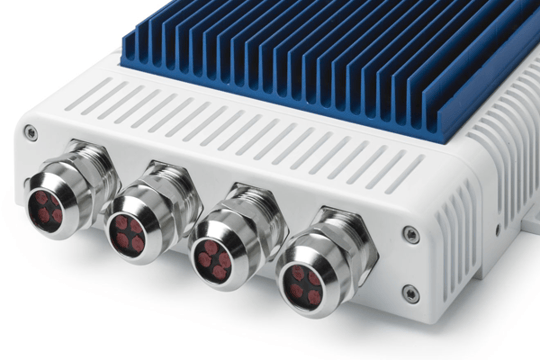
The RFeye ecosystem from CRFS offers a variety of software and hardware options. We have created this guide to help you select the tools necessary to meet your specific needs and requirements.
The Hardware
Our RFeye Nodes and Arrays do the physical work of monitoring the electromagnetic (EM) spectrum, capturing signals of interest and sending them back to our software.
Our Nodes and Arrays are intelligent receivers. They use embedded software such as our Embedded Mission Processor (EMP) and our Node Control Processor (NCP) to identify and prosecute signals of interest at the receiver level, thereby minimizing backhaul bandwidth. This also means each Node or Array offers multi user, multi mission capability.
Our hardware’s broadband capabilities mean it can detect any number of signals, from longwave communications, to push-to-talk radio to mobile, wifi and satellite telecommunications, to drone uplinks and downlinks and commercial aircraft signals. Where most sensors can only “see” high frequency (HF) to ultra-high frequency (UHF), our Nodes and Arrays collect signals from very low frequency (VLF) to super high frequency (SHF), with clarity down to 1 Hz.
When do you need a Node versus an Array? Find out below.
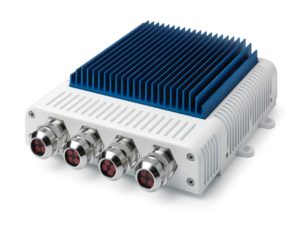
RFeye Node 100-8
RFeye Nodes
- Smaller than Arrays
- “Intelligent” – operate independently using embedded software
- 1-2 Nodes can detect signals without drawing locational information
- 3+ can perform geolocation using time difference of arrival (TDOA) and/or power difference on arrival (POA)
- 4+ can also perform geolocation in three-dimensional space, including altitude (3D-TDOA)
- Can be wall or stand mounted, housed in a hard Peli/Pelican case for rapid deployment (our Stormcase) or mounted outdoors with our IP 65–rated outdoor kit (ODK)
- Also mountable on drones or aerostats with potential to be man portable
Please see our white papers for additional information on RF spectrum intelligence gathering and advanced geolocation techniques. To hear more about our upcoming white papers, including a comparison of geolocation techniques, keep an eye on our Twitter and LinkedIn pages.
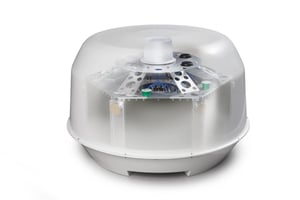
RFeye Array 300
RFeye Arrays
- Larger than Nodes; Array 300s are quite large
- Arrays 100, 125 and 150 use one internal receiver and multiple spiral antennas
- Array 300s use two internal receivers and multiple spiral and monopole antennas
- Each Array offers Direction Finding (DF) capabilities using Angle of Arrival (AOA)
- 1 Array can provide a line of bearing (LOB) for signals of interest
- 2+ can provide a geolocation using AOA
- 3+ can perform geolocation using AOA, TDOA and/or POA
- 4+ can also perform 3DTDOA
- Arrays are housed in an IP 55–rated radome for fixed or vehicle-mounted applications
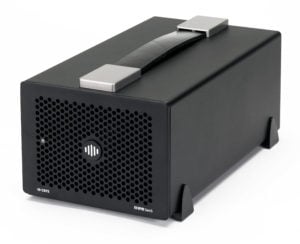
The RFeye SenS Portable
RFeye SenS
CRFS Nodes and Arrays have some recording capabilities, but we realize that data quickly adds up. To meet this need, we have created RFeye SenS.
RFeye SenS offers modular configurations including a portable module and rack-mounted remote and full-stack modules. Different sub-configurations allow you to choose the amount of processing power, storage space and instantaneous bandwidth, and potentially playback type, to meet your particular requirements.
For more information, please visit our RFeye SenS page.
The Software
CRFS software performs spectrum intelligence using central processing that pulls together data from multiple Nodes and/or Arrays.
Our three levels of software, RFeye Site, Mission and DeepView, have different applications and are designed for varying levels of expertise.
RFeye Mission Manager
-
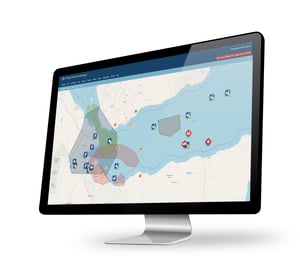
RFeye Mission Manager
Simple interface designed for ease of use
- Minimal signals expertise required
- Provides 24/7 automation of frequency monitoring
- Sends real-time alerts when suspect signals are detected
- Offers geofencing to detect signals in sensitive locations
- Makes scheduling simple with easy importing of known signal parameters
- Map display gives a simple snapshot including essential elements of information (EEIs)
- Enables secure client server authentication
- Web platform works on practically any operating system
RFeye Mission Manager covers gaps in coverage that are inherent in real-time missions. It does not take sick days, restroom breaks or holidays. Its automation makes allowances for training deficiencies and stores mission expertise regardless of staffing changes. However, for signal verification and analysis, a more in-depth software package is required.
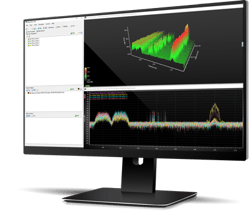
RFeye Site
RFeye Site
- Intermediate interface for a signals SME
- More demanding to use than RFeye Mission
- Equips experts to conduct real-time spectrum analysis
- Allows parameter adjustment to maximize geolocation quality
- Offers added capabilities for spectrum masks to detect new signals above the noise floor
- Additional features including quench, squelch, averaging and signal overlays provide better information about signals of interest
- Enables optimal site selection using signal propagation models over terrain
- Provides recording capabilities for post-mission analysis
- Runs on Windows OS
RFeye Site offers added functionality that Mission lacks. It allows a skilled operator to adjust analysis parameters to provide the most accurate information possible. However, as a real-time software with a steeper learning curve, Site is designed for the Electronic Warfare and/or Signals Intelligence (SIGINT) SME.
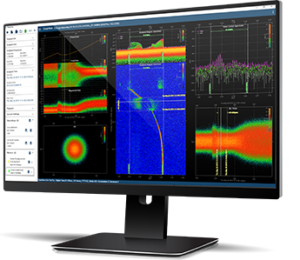
RFeye DeepView 1.0
RFeye DeepView
- Designed to work with RFeye SenS to comb through terabytes of data for signals of interest
- Not designed for novices or intermediate users but for signals and electronic intelligence (ELINT) experts
- Supports rapid analysis in incredible detail with full-rate I/Q data storage and limitless file duration
- Able to find and analyse complex signals including frequency hopping, co-channel and short-pulsed signals and low-power signals “hiding” near louder signals
- Features advanced capabilities including amplitude and phase information and display of entire I/Q file directories
- Allows interactive zoom and scroll in real time for tailored recording by an expert
- V1.0 and V2.0 are Windows based
RFeye DeepView is designed for super users. Because it can record terabytes of data in real time, with the operator controlling what gets recorded, DeepView is not forgiving of user error. It demands technically advanced signal knowledge to operate, but it also offers tremendous insight in the right hands.
Find Out More
To request a demo or to hear more about our hardware or software, please reach out to our application experts here. They will be happy to assist you and answer any questions you may have.
You can also find more information on the technologies we use and the applications we support at crfs.com.
We look forward to working with you to provide customized solutions for your specific mission requirements.
